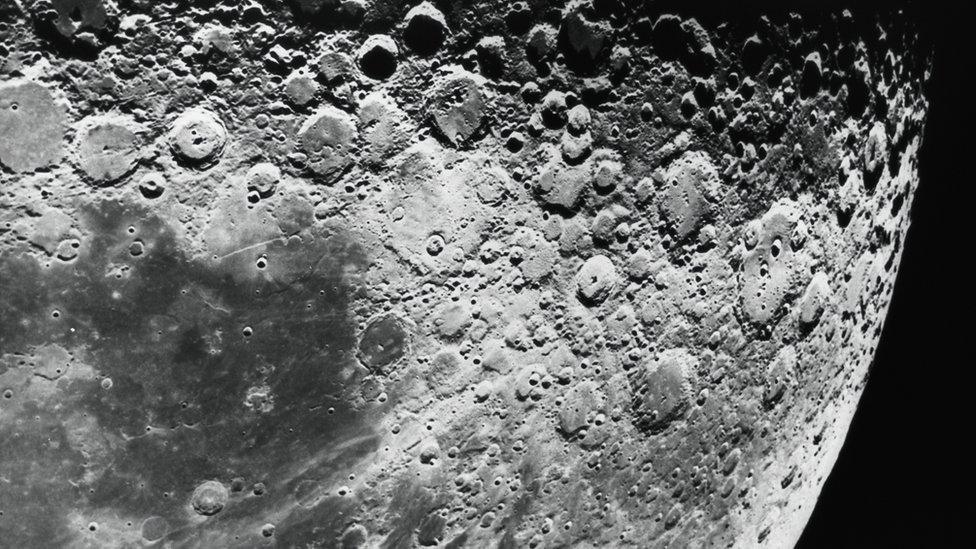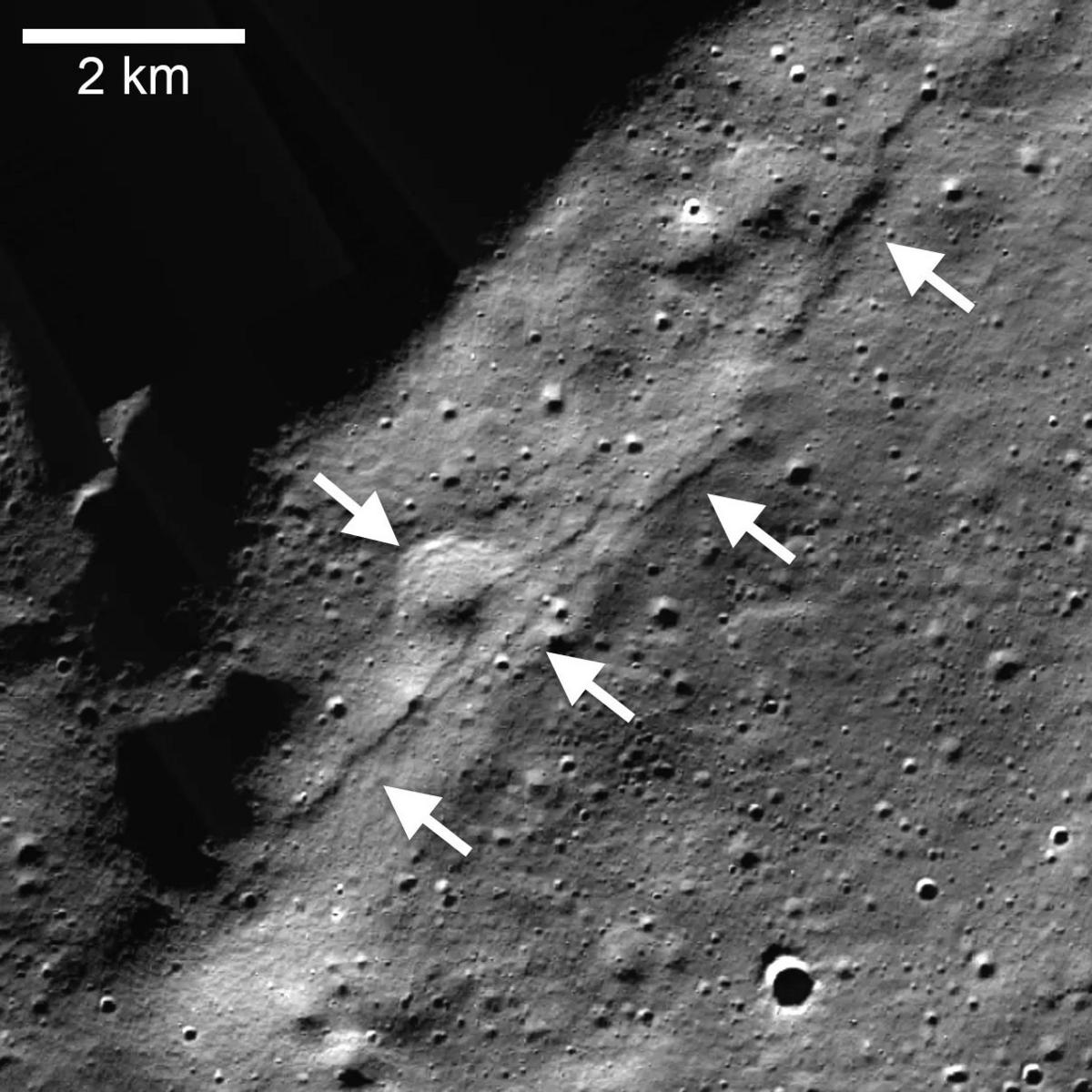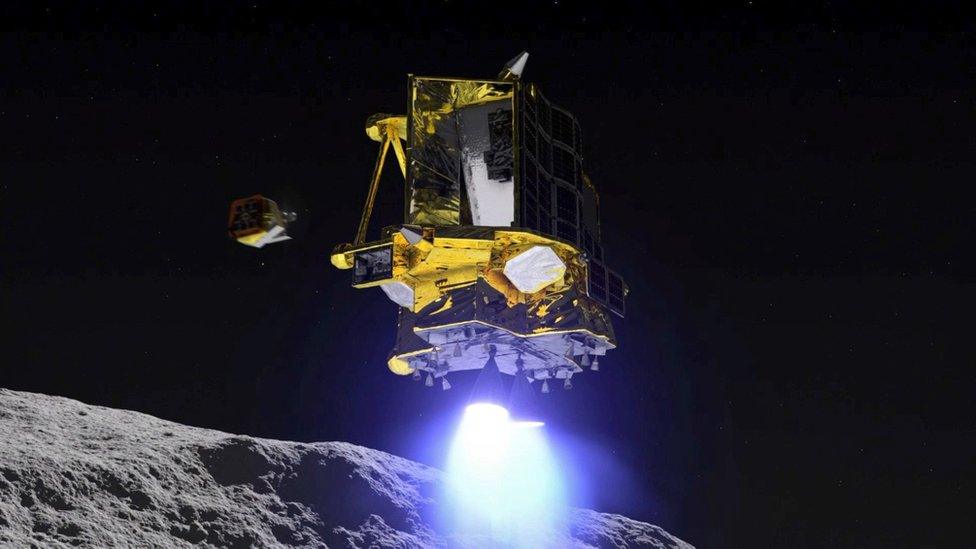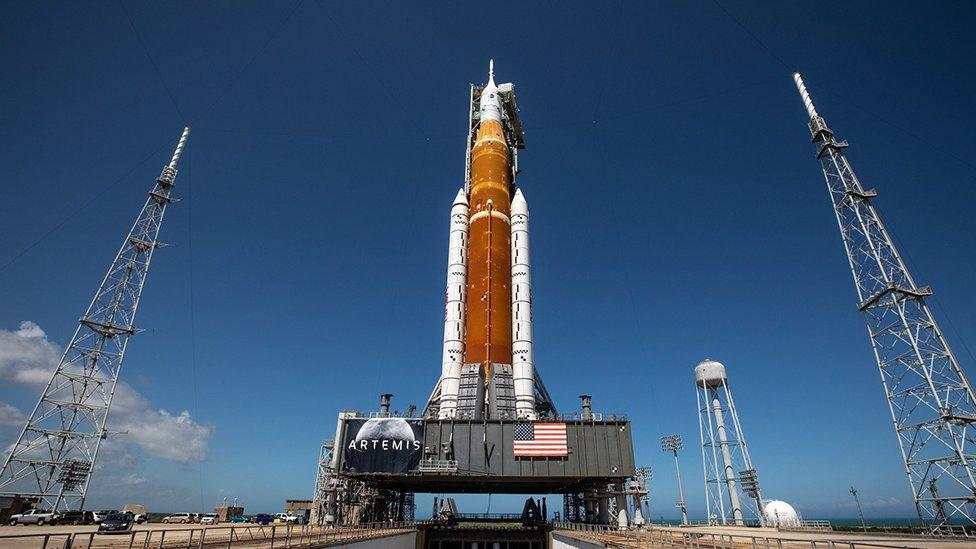How the shrinking Moon could affect Artemis III and other missions
- Published
- comments

The Moon is shrinking say experts, with moonquakes and landslides happening at the planned site of a future astronaut mission.
At its centre, the Moon has a hot iron core, which Nasa says is gradually cooling and shrinking in size.
As this happens, faults along the Moon's surface have appeared, breaking and shifting upwards like a step. Researchers say that the faults, accompanied by moonquakes at the Moon's south pole, means the area is particularly vulnerable to landslides.
Landing sites at the Moon's south pole have been identified for Artemis III, the first Artemis mission that plans to land astronauts on the lunar surface, scheduled for 2026.
Moonquakes - what are they?
Shallow moonquakes occur only about 100 or so miles deep into the Moon's crust.
Scientists say the moonquakes are similar in lots of ways to the earthquakes we experience on our home planet.
Like the strong tremors felt on Earth from time-to-time, they can damage structures and equipment, however there is one big and potentially devastating difference; unlike earthquakes, moonquakes can last for hours.
Which poses some serious questions for future Moon missions and the potential locations of bases and colonies on the lunar surface.
How moonquakes could affect Artemis III and other lunar missions

"Over billions of years, the surface has been hit by asteroids and comets, with the resulting angular fragments constantly getting ejected from the impacts," says Nicholas Schmerr, Associate Professor at the University of Maryland and Planetary Seismologist.
Which means all the loose bits of dust and potentially hazardous rocks on the surface moves and bounces around very easily during a moonquake.
Which Nicholas Schmerr adds "make it very possible" for "landslides to occur".
A scientist who studies earthquakes is called a seismologist.
Earthquakes: what are they and what causes them? (2018)
In the 1970s, Nasa began recording moonquakes using something called the Apollo Passive Seismic Network, a series of seismometers deployed by the Apollo astronauts which monitored movements within the Moon's crust.
Scientists measure earthquakes - or in this case moonquakes - using the Richter scale. It is a way of measuring the strength and size of an earthquake, and the result is a number from 0 to 10.

Nasa's Lunar Reconnaissance Orbiter discovered faults on the Moon's surface which are accompanied by moonquakes
Researchers found that a magnitude 5 moonquake, recorded by the seismic network around 50 years ago, was actually connected to a group of fault lines detected on the Moon's surface by the Lunar Reconnaissance Orbiter more recently.
Which means that location could have some dangers for astronauts if they were to land there in the future.
"This work is helping us prepare for what awaits us on the Moon - whether that's engineering structures that can better withstand lunar seismic activity or protecting people from really dangerous zones," Dr Schmerr said.
- Published30 January 2024

- Published14 May 2019

- Published29 January 2024

- Published10 January 2024

